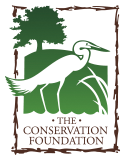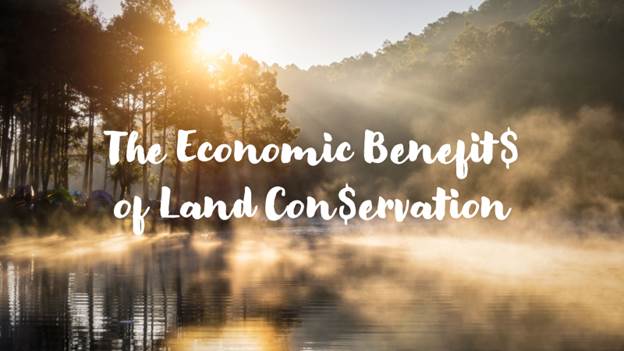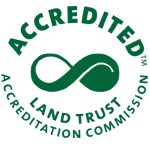In these days of limited funds, how can you justify the money spent on land conservation? Or put another way, what are the economic benefits obtained from land conservation? In this post, we will discuss how land conservation increases home values, provides jobs and revenue from recreation and tourism, avoids costs, and derives value from ecosystem services.
Home Values
Open spaces like parks, forests, farms, and prairies increase the value of nearby houses by making the community more desirable. Why? Because they improve the quality of life for a community by making it more beautiful, providing recreation areas for families, and helping maintain a more peaceful level of activity. Now, not every community will be as lucky as Jackson Hole, Wyoming, but there are plenty of examples of improved land values.
In Grand Rapids, Michigan, a study of property sales from the late 1970’s through 2000 in 3 residential neighborhoods near preserved forests showed that lots bordering the preserved forests sold for 19 to 35% more than those a greater distance from the forests. During the same period, in 3 residential neighborhoods near unpreserved forests, there was no increase in property value for those lots bordering the forests in two of the neighborhoods, and a much smaller increase in the third.
In addition, governments also benefit from the additional property taxes that come with higher land values.
Jobs and Revenue
Preserved land can also provide revenue and jobs from recreation and tourism. These come from direct revenues generated by products and services (e.g., sale of agricultural commodities like honey or expenditure by nature tourists), supply chain industries that support those products and services, and ‘downstream’ economic activity as income is re-spent on other goods and services. In addition, governments could benefit from license revenue for fishing, hunting, and wildlife recreation.
In a report done by the Delaware Valley Regional Planning Commission and Greenspace Alliance, the economic benefits of preserved open spaces in Southeastern Pennsylvania included, “More than 6,900 jobs and $299 million in annual earnings from economic activities associated with protected open space.”
Avoided Costs
Avoided costs are defined as the likely future costs of ignoring a major risk. These costs can be potentially quite large. For example, spending on flood prevention and reparation of flood damage. As stated in the Waldron report, avoided-cost spending is widespread in all public budgets based on some form of defense against risk (including military defense, flood defense, law and order, and public health, as evidenced by recent government responses to the coronavirus epidemic.
Examples of avoided/avoidable costs are:
- Health (degraded air quality, infectious diseases) – (Visit our Nature Rx web page for additional details on this and how land conservation can help)
- Flood prevention/loss of flood damage
- Reduced residential energy costs from heat waves
- Wildfires
- Increasingly severe storms
- Cost of treating drinking water
In an instance of avoided health costs, The Trust for Public Land on November 9, 2015, stated the improved health of area residents for the Johnson County (KS) Park & Recreation Department from taking advantage of the parks, trails, and facilities resulted in overall health care cost savings of $21.2 million.
Land conservation is a proactive approach to avoiding costs by addressing many of the underlying reasons for those costs. An ounce of prevention is worth a pound of cure.
Ecosystem Services
Ecosystem services are the benefits to humans provided by the natural environment and from healthy ecosystems. Such ecosystems include, for example, agroecosystems, forest ecosystems, grassland ecosystems and aquatic ecosystems. These ecosystems, functioning in healthy relationship, offer such things like natural pollination of crops, clean air, extreme weather mitigation, human mental and physical well-being. Collectively, these benefits are becoming known as ‘ecosystem services’. These services are categorized into four groups based on the benefits provided. The categories include:
- a) provisioning services which are the material or energy outputs from ecosystems, such as water, food, and medicinal resources
- b) climate regulating services that maintain environmental symbiosis, such as nitrogen cycling, water filtration and temperature cooling
- c) habitat services, which are the processes through which nature provides all the inputs necessary for life to survive and thrive, and
- d) cultural and amenity services, or how humans physically and mentally benefit through interaction with nature (once again, think Nature Rx)
These services provide economic benefits over and beyond what has already been discussed and should be considered when providing a holistic view of the benefits from land conservation. This was done by the Trust for Public Land in 2010. Their research found that every $1 of Land and Water Conservation Fund (LWCF) funds spent returns almost $4 in economic value. Using $537 million in LWCF funds, 131,000 acres of land were preserved. During the study period, these lands provide $2 billion in water quality protection and supply, flood protection, fish production, habitat provision, storm protection, carbon sequestration, grazing, aesthetics, pollination, dilution of wastewater, and erosion control.
Ready to fight for land conservation and provide some economic benefit? Well, land conservation is what The Conservation Foundation does every day. We can all do more together than we can alone. Join our collective momentum – Become a member today!
Written By: Steve Stawarz, Oak Brook
DuPage County Advisory Council Member



